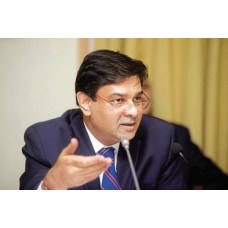CAD shoot-up to 1.7% in 9 month of 2017-18
Statement by Dr. Urjit R. Patel, Governor to the International Monetary and
Financial Committee (IMFC) in Washington DC Here is the part under India heading:
The Indian economy turned in resilient performance in 2017-18 (April - March). Although real GDP growth moderated to 6.6 per cent from 7.1 per cent a year ago, there was a strong rebound in the second half of the year on the back of a turnaround in investment demand, supported by an acceleration in manufacturing, rising sales growth, a pick-up in capacity utilisation, strong activity in the services sector and a record agricultural harvest.
Several factors are expected to accelerate the pace of growth in 2018-19. There are now clearer signs that the revival in investment activity will be sustained. Global demand has been improving, which should encourage exports and boost fresh investments. On the whole, real GDP growth is expected to expand at 7.4 per cent in 2018-19, with risks evenly balanced.
Since November 2016, headline consumer price inflation has remained below the medium-term target of 4 per cent. An unusual spike in vegetables prices pushed up inflation to a recent peak of 5.2 per cent in December, but it eased in subsequent months to reach 4.4 per cent in February.
The government is committed to fiscal prudence. Helped by buoyancy in tax revenues and rationalisation of subsidies, the gross fiscal deficit (GFD) of the central government has been steadily brought down since 2013-14 to 3.5 per cent of GDP in 2017-18 without compromising on public investment requirements and social sector spending. The GFD is budgeted lower at 3.3 per cent in 2018-19.
The government has accepted a debt rule that will bring down the debt-to-GDP ratio to 40 per cent over a period of time by 2024-25. The goods and services tax (GST), which was implemented from July 2017 has reformed the system of indirect taxes by simplifying payments and credits, and improving the efficiency of movement of goods across the country.
Automation of tax payments and ‘team based assessment with dynamic jurisdiction’ without direct interface with tax payers has improved overall efficiency and transparency of revenue administration.
Driven by the pace of import growth relative to that of exports, the current account deficit (CAD) expanded from 0.7 per cent in 2016-17 to 1.7 per cent the first nine months of 2017-18. External financing conditions remain comfortable, boosted mainly by robust inflows of foreign direct investment (FDI).
The UNCTAD’s survey of multinational enterprises ranked India as the third most favoured destination for FDI for 2017-19. Reflecting these developments, India’s foreign exchange reserves at US$ 424 billion were equivalent of 11 months of imports.
Meanwhile, India has persevered with structural reforms over a wide area ranging from a flexible inflation targeting framework for monetary policy; liberalization of FDI flows; a unique identification (Aadhaar) – backed direct benefit transfers; an insolvency and bankruptcy code; the GST; realty reforms; and a swathe of measures for improvement in the ease of doing business more generally. These factors have improved India’s global ranking in the World Bank’s Ease of Doing Business.




